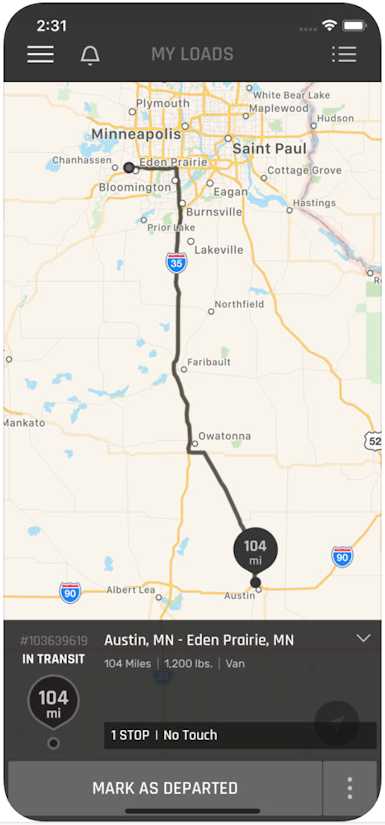Data scientists at Amazon and other e-commerce sites are experts at configuring algorithms to mine the search and purchase histories of consumers to recommend new products.
Motor carriers are experiencing a similar phenomenon from some freight brokers and third-party logistics providers (3pls). Loads matching their present and future needs are being offered through apps, websites and phone calls without having to go search for them.
Such is the experience for carriers doing business with C.H. Robinson.
As one of the largest 3pls, the Eden Prairie, Minn.-based company does business with more than 73,000 carriers. The company generates more than $14.8 billion annually in sales and has 15,000 employees.
A team of about 30 data scientists is leveraging the company’s large and expanding database of carrier and shipment data for some interesting uses. One ongoing project is making it possible to accurately predict where and when loads will become available from its customers, and to secure future capacity commitments from carriers.
With this ongoing analysis, “carriers are being offered loads before they asked for it,” says Tim Gagnon, C.H. Robinson’s vice president of data science and analytics.
The granularity of shipment tracking data from carriers is supporting this and other advancements. C.H. Robinson’s Navisphere app uses the GPS on drivers’ smartphones to track its shipments. The company also gets tracking data from a variety of telematics providers with the carrier’s permission.
Either of these methods can provide automatic status updates down to every 15 minutes, he says.

C.H. Robinson offers carriers loads and tracks shipments through the Navisphere app.
Another way C.H. Robinson uses automated load tracking and visibility data is to analyze detention events at shipping facilities. Results from the analysis drive fact-based conversations with customers, he says.
“ELDs are bringing a greater urgency” to shorten the turnaround at shipping and receiving locations, he notes. “All of the work we are doing in this space is trying to take the friction out and assist at all levels.”
Gagnon doesn’t expect faster loading and unloading times happening at a large scale overnight, however.
“I’d be lying if I said the insight has had a widespread impact,” he says. “We are still in the early innings in executing on a lot of that learning.”
Optimizing load offers
With a massive collection of historical data on shipments and carriers, the company’s data scientists are continuing to develop more sophisticated methods to optimize round-trip movements for carriers, says Gagnon. This round-trip focus is also a revenue-generating opportunity for the company.
To make the best possible load recommendations for carriers, C.H. Robinson is using past business and search data from carriers as well as buying data and connecting to open-source data communities.
“Our highest priority is to convert data into real value. Some ideas win, and some don’t, but we absolutely execute on some of those things. The reason is to retain capacity and deliver value to carriers,” he says.
While these and other techniques for optimizing loads for carriers are sophisticated, “we have to keep it really simple as it relates to our connections with carriers,” he explains. The simplicity has to be consistent across the communication methods it has for carriers — by phone, electronic data interchange, the carrier web portal, Navisphere app and any combination thereof, he says.
Whereas the Electronic Logging Device rule was expected to take additional capacity out of the market, the impact is difficult to quantify for the transportation industry as a whole. C.H. Robinson has been seeing its capacity increase as more carriers sign up to use its apps and website to find loads, Gagnon says.
Looking to the future, Gagnon sees an opportunity to use data science to configure optimal routes for autonomous vehicles. That endeavor is at least five to 10 years away, he says. The most likely scenario will be to use autonomous vehicles to transport freight on long haul routes to drop yards near metro areas, from where local drivers will be making the pickups and deliveries.
“There is a lot that needs to play out before we get too descript,” he says.
Original Source: https://www.ccjdigital.com/c-h-robinson-moving-forward-with-data-science/
